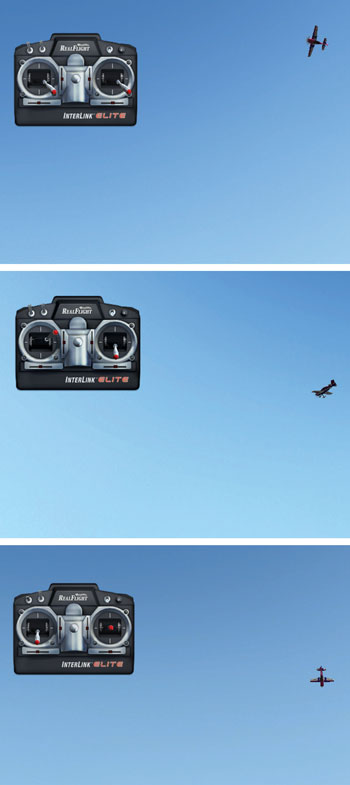
By Klaus Ronge
Flat spins are a spectacular maneuver in which the plane spins in a flat attitude while descending slowly, maintaining altitude or in some cases even gaining altitude. They are not especially difficult to perform, but require finesse to get a truly flat spin. The key to success in this maneuver is having a plane that is setup properly and capable of performing the maneuver. Some planes perform very nice flat spins and recover easily while other planes will not enter the maneuver and some will recover with great difficulty if at all. It pays to do some research to find out how your plane behaves in a spin or have a pilot proficient in the maneuver try it with your aircraft before you attempt it.
PLANE SETUP
Large control throws and deflections are necessary to perform flat spins and most 3D-capable models will perform them. The CG should be at the aft end of the manufacturer’s CG range for easier spin entry. Also, ensure the servos, especially the rudder servo, are up to the task and will not “blowback” toward neutral under load. For nitro or gasoline-powered models, ensure that you have a reliable idle so the engine won’t quit during the spin. Advanced radios usually have a feature which raises the idle during flight with a switch which should keep the engine running.
GETTING STARTED
Before attempting a flat spin, it is important to be proficient at conventional spins. A spin is defined as the auto-rotation of the aircraft about one stalled wing panel while the other is still generating some lift and the aircraft is descending. To enter a spin, get the plane as high as you can while still maintaining its orientation and fly parallel to the runway. Prior to reaching the center of the runway, reduce the throttle to idle and maintain altitude using the elevator to slow the plane. When the plane reaches the stall and the nose drops, add full aileron and rudder in the same direction along with full up elevator. Hold these control inputs for about a half a turn prior to your desired exit point. To recover, center the sticks and let the plane build speed with the nose pointing down in order to get out of the stalled condition. Add power and recover to straight and level flight. A word of caution; resist the impulse to add full up if the plane is nearing the ground while in the spin or before it has gained sufficient airspeed. The nose must be pointing down to gain airspeed for the recovery.
Flying the maneuver on a simulator is a great help in getting familiar with the stick movements. However, your particular aircraft may not react the same as the sim, even if it is the same model. A 3D foamy is also a great low risk way to gain some proficiency in the maneuver before trying it on your favorite aerobat.
PERFORMING THE FLAT SPIN
A flat spin starts out as a conventional spin; start out high and enter a spin. After the spin is established, usually about a turn, slowly add some throttle, about half, and move the aileron stick toward neutral. Hold these inputs and watch what the plane does. Each plane will react differently and you need to find the “sweet spot” by varying the amount of power and aileron deflection. If the plane is still descending rapidly and is not in a flat attitude, add more power and/or opposite aileron. If it looks like the plane is going to stop spinning, then reduce power and/or aileron deflection. Too much elevator and power can make the plane look like it will do a forward flip. Keep varying the control inputs until the plane is in a nice flat spin. Now that you know your plane’s capabilities, you can further experiment with the control throws to get some really spectacular flat spins.
Recovery is the same as a typical spin, but more altitude is required since the plane must recover its airspeed from a flat attitude. For your first attempts, exit the spin at a high altitude until you are familiar with its spin characteristics. Also, bring the throttle to idle during the recovery until the airspeed is built back up. Some aircraft will continue to spin for a number of turns after the controls are released. If the plane looks like it is continuing to spin, or you want to speed up the recovery, add some opposite rudder to stop the spin. Adding power speeds recovery as well.
Spins, in particular flat spins, are fun to do so go out and try some. Just make sure you know how to get out of them as it is disheartening to watch your plane spin into the ground. Once you have the upright flat spin nailed, you can try your hand at inverted flat spins.
 Fly RC Magazine WE LIVE RC
Fly RC Magazine WE LIVE RC
